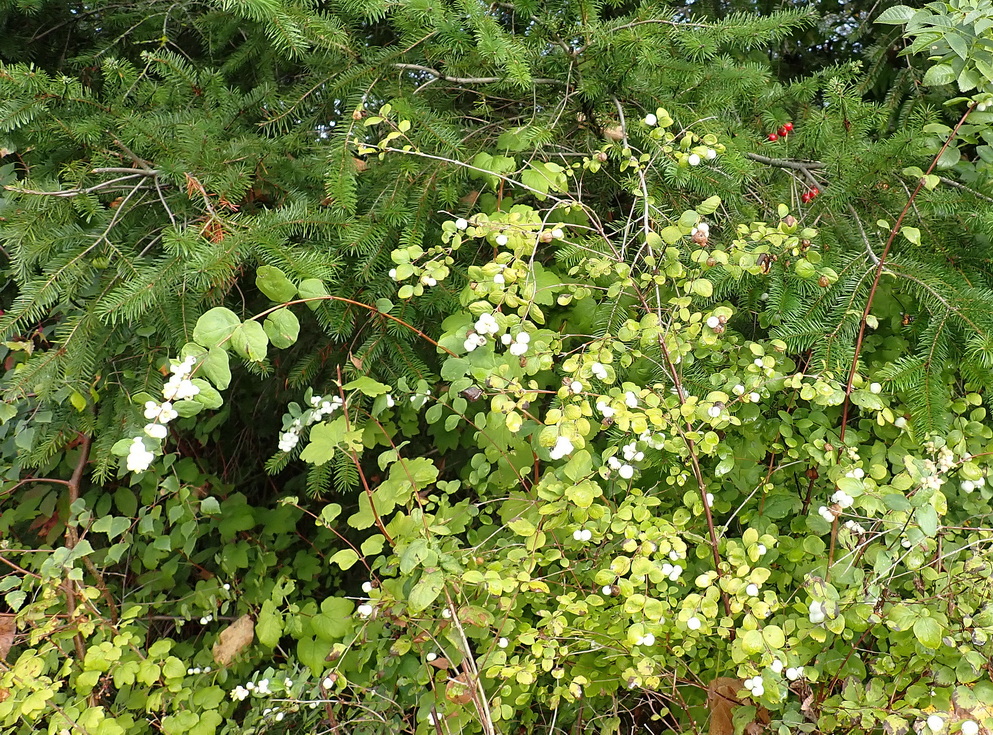As the leaves begin to turn, the hard, waxy fruits of fall catch my eye, including the bright red rosehips and the contrasting white snowberries.
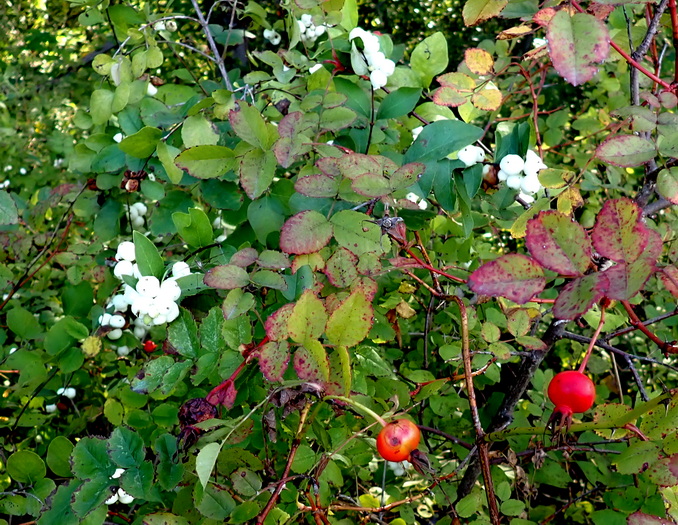
I’m thinking about fall planting, too. I’ve already installed two Baldhip roses in a shady nook under the canopy and have plenty of Common snowberry. I wish I could plant either a Nootka or Clustered rose with the snowberry, but I don’t really have enough space to accommodate their aggressive spreading. But you might.
Baldhip rose (Rosa gymnocarpa)
“Well behaved and even shy,” the shade-loving Baldhip rose can easily be overlooked in the deep woods, growing amidst other plants, displaying its modest flowers only briefly, and producing but a few small hips.

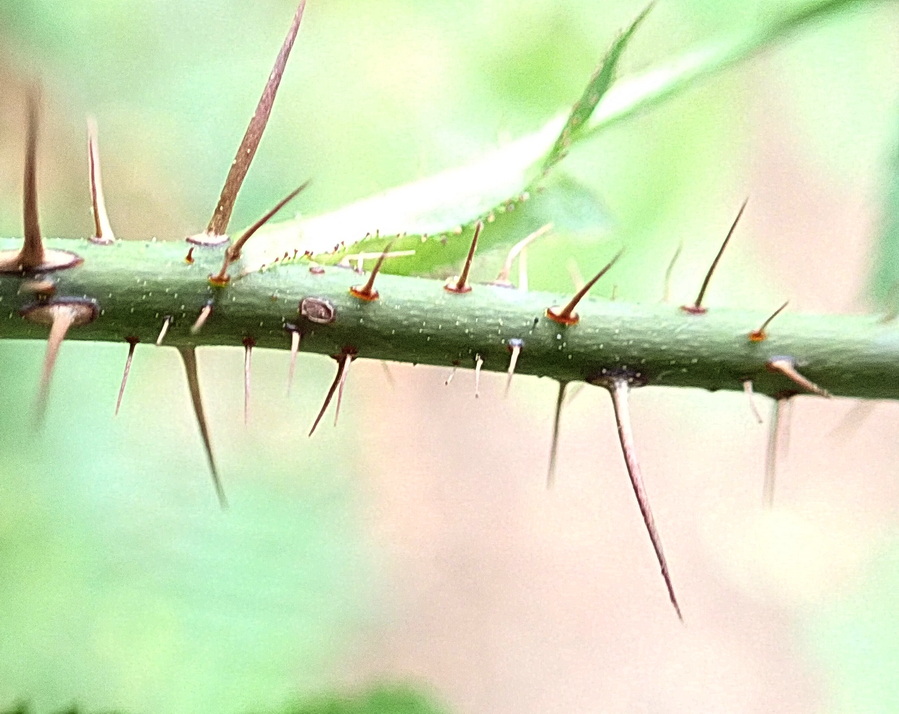

Nootka rose (Rosa nutkana) and Clustered rose (Rosa pisocarpa)
The more aggressive cousins of the Baldhip, the Nootka and Clustered roses, take full advantage of direct sunlight and spread via rhizomes to form dense thickets over six feet high.
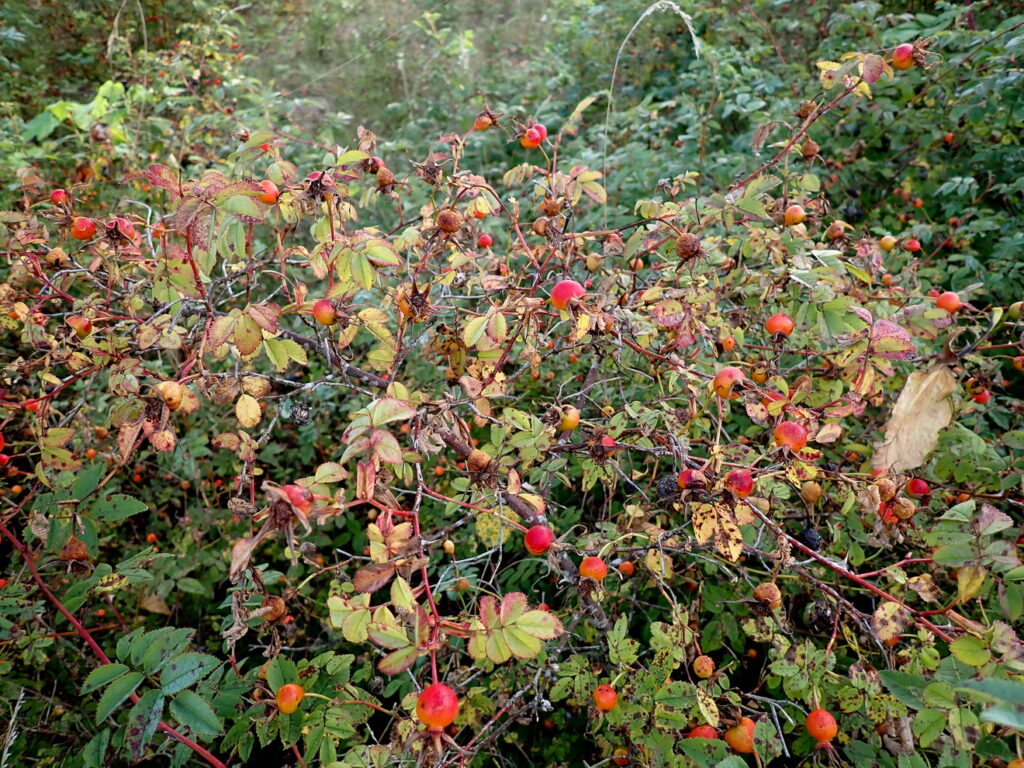
I agree with Dana Kelley Bressette that the Clustered rose is very difficult to distinguish from the Nootka. Their rosehips can offer clues.

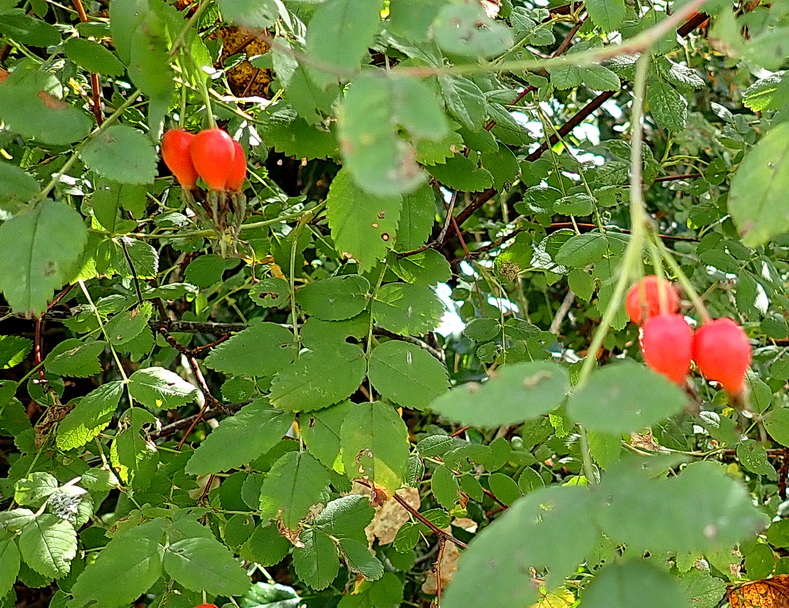
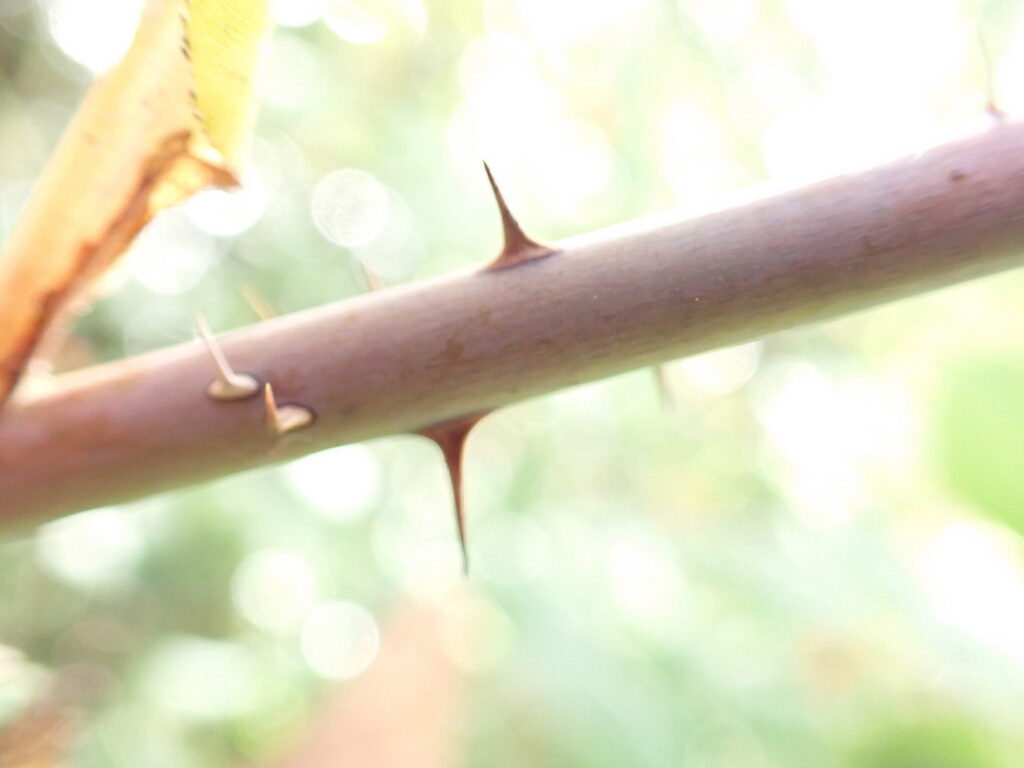

Invasive Roses
There are at least three non-native roses that are invasive in Western Washington, the Dog rose (Rosa canina), Sweetbriar rose (Rosa rubiginosa), and Multiflora rose (Rosa multiflora). Turner and Gray state that “with its size, prickles, and suckering, Dog rose can be a monster when established” (here, page 82).
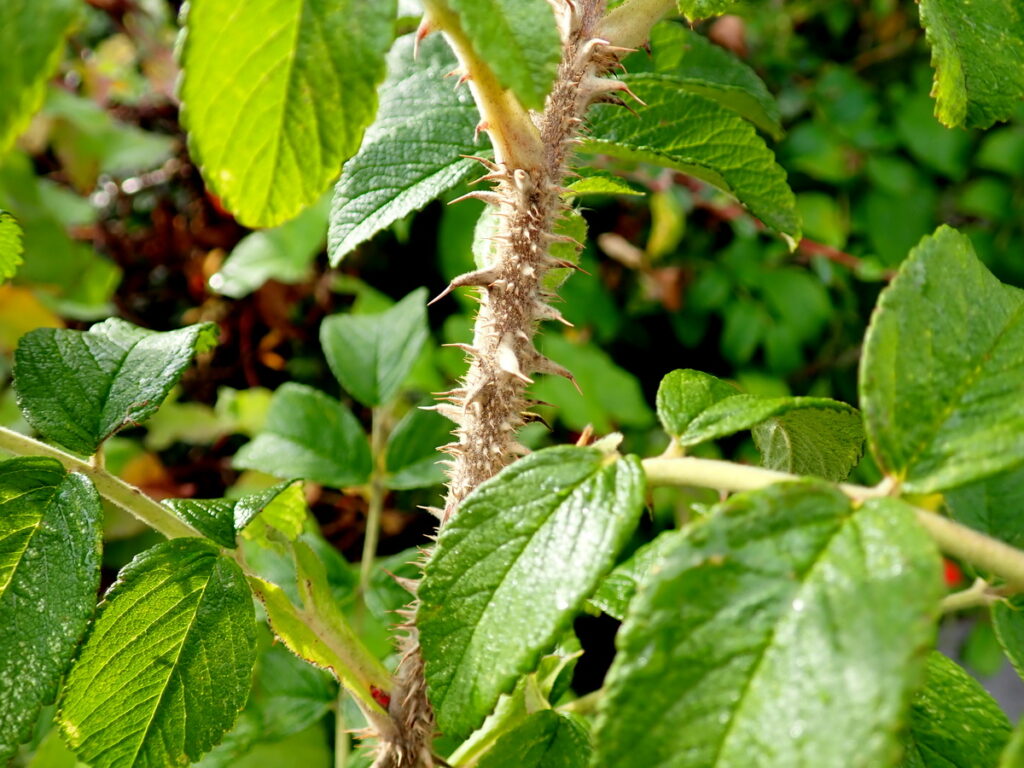
Common snowberry (Symphoricarpos albus)
The Common snowberry grows in sun or partial shade, tolerates drought and poor soil, transplants easily, and spreads rapidly.
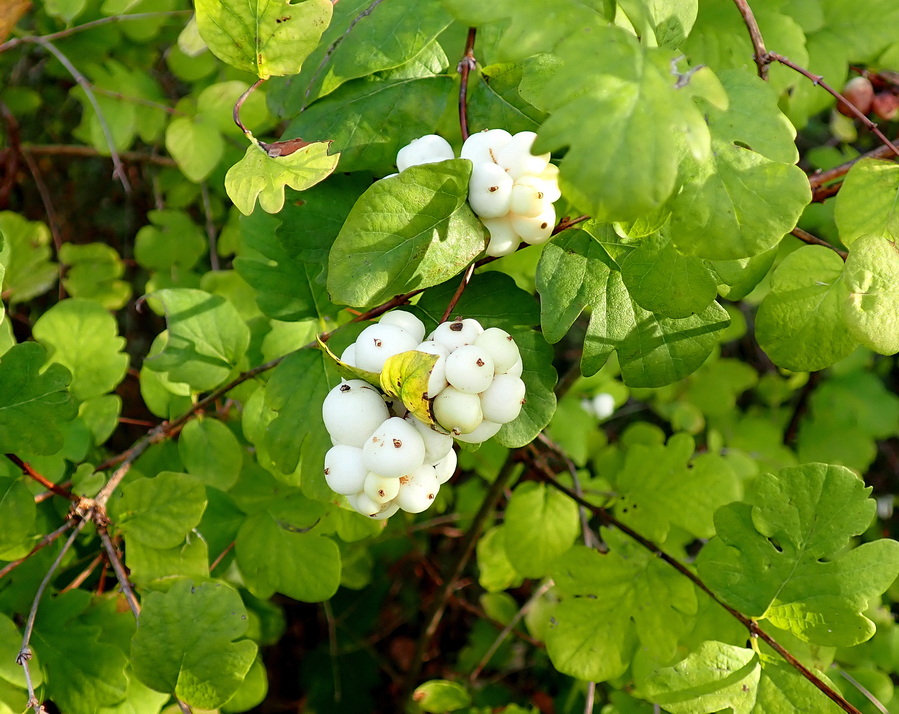
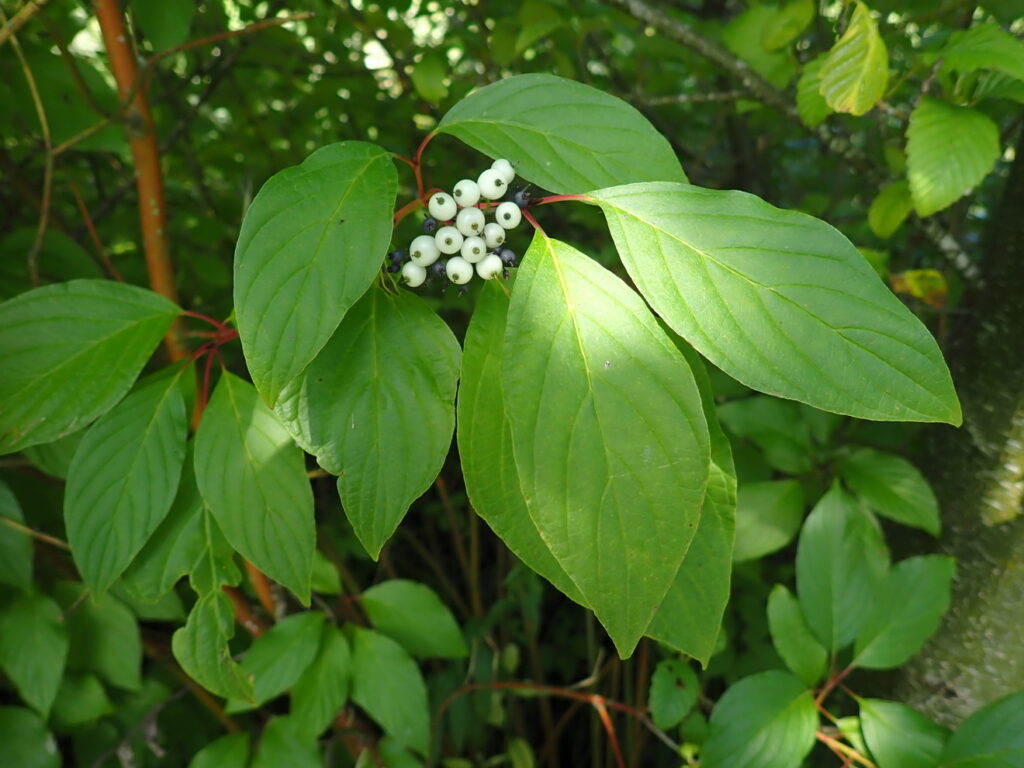
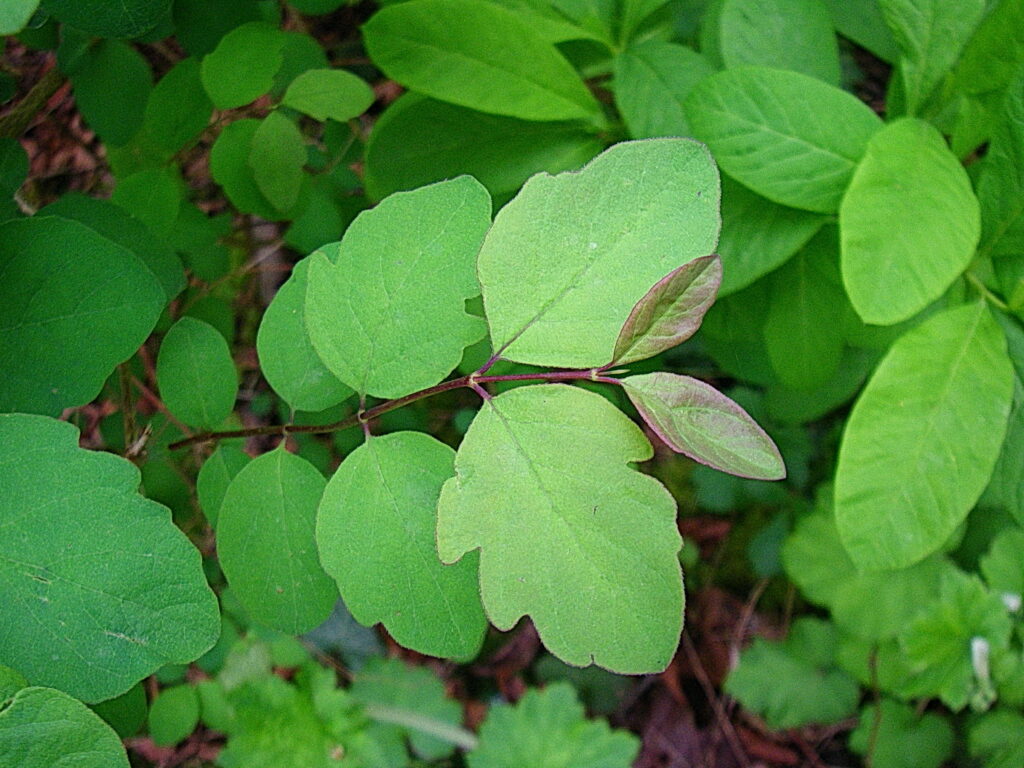

Obtaining Roses and Snowberries for the Backyard Forest
I would not try to salvage Nootka or Clustered roses that may have germinated from seed. For one thing, it’s not necessarily easy to distinguish them from invasive roses. Furthermore, they hybridize with each other. and probably with at least some of the invasive roses.
To ensure that you install only native roses, I would advocate starting with plants purchased from a reputable native plant nursery. Ideally, their plants would have been propagated from rhizome or stem cuttings to ensure species integrity. After your roses have become established, you can multiply them the same way or simply transplant suckers.

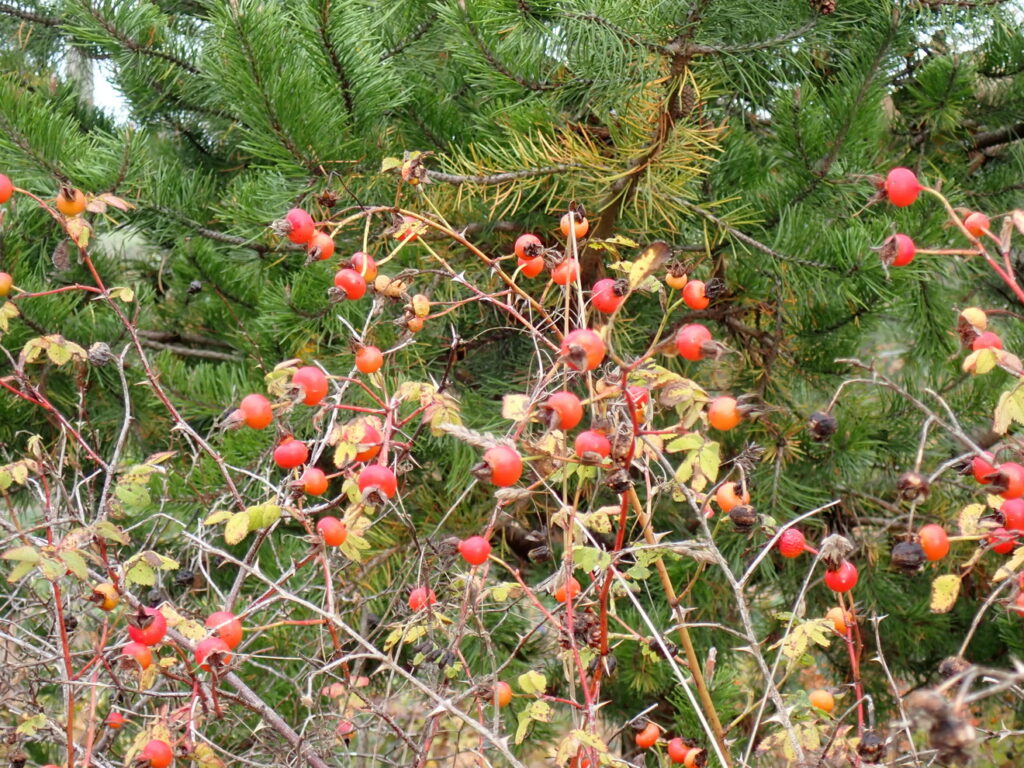

In contrast to the roses, I think the Common snowberry is a safe salvage plant, because it is the only species of its genus that commonly grows wild in the Puget Lowlands.
